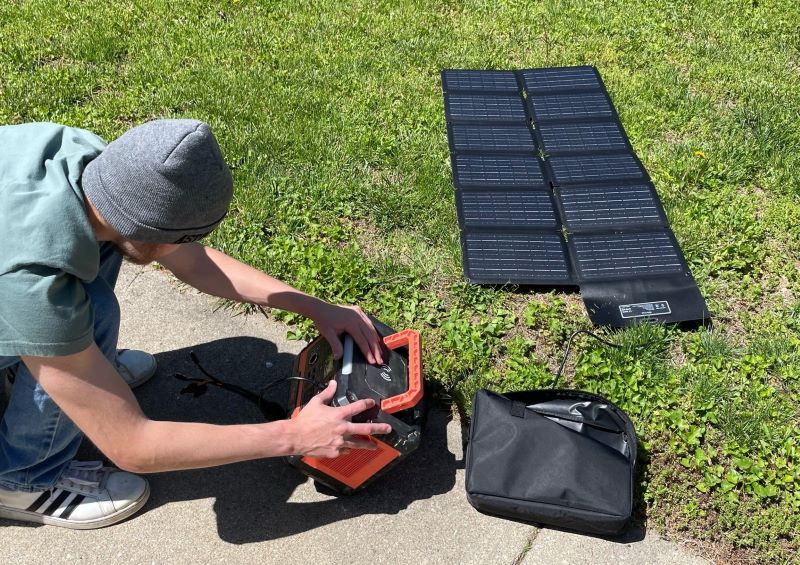
REVIEW – Earlier this year, this review team enjoyed testing out the Yargo YP100W solar panel. When Yargo offered to let us test the even more portable version, the Yargo 100W portable solar panel (YB100), we were happy to give it a try. We found that it’s very similar to its bigger cousin, with just a few notable differences.
What is it?
The Yargo 100W portable solar panel (YB100) is a very light, folding solar panel that comes with a 4-in-1 connector, a carrying case and four carabiners for positioning/hanging.
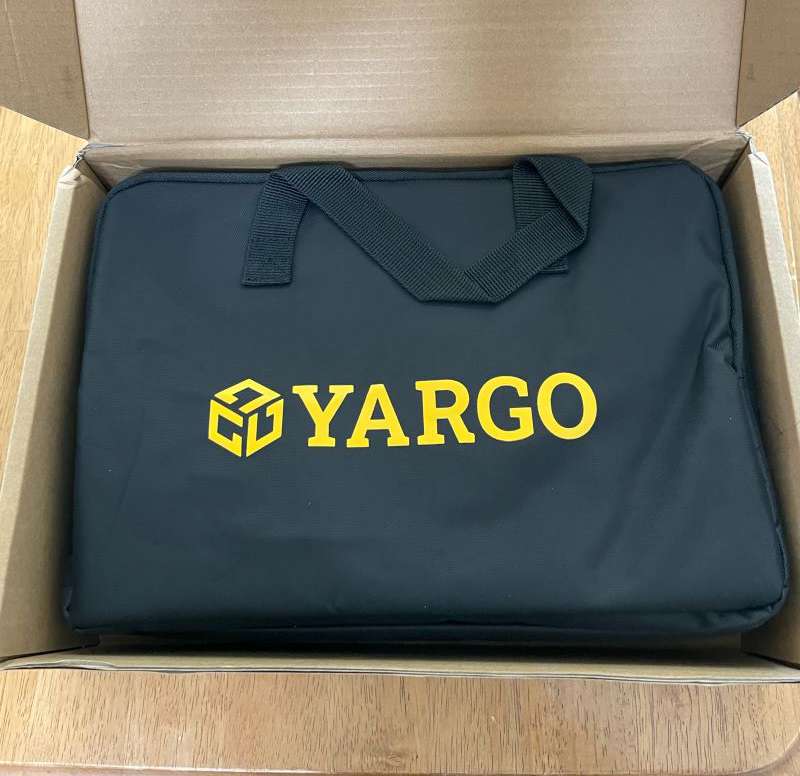
What’s in the box?
- Yargo 100W portable solar panel
- Carry bag
- 4-in-1 connection cable
- Hang buckle/carabiners (4)
- Instruction manual
Hardware specs
- Brand: YARGO
- Material: monocrystalline silicon
- Dimensions(folded): 11.4 x 8 x 2.7 inches
- Dimensions(unfolded): 53.9 x 23 x 0.1 inches
- Weight 5.5 Pounds
- USB output: output voltage 20.9V; max output current 3A
- DC output; output voltage 20.9V; max output current 4.8A
- Solar indicator: Green (normal); Not bright (solar panels are not opened or covered or fault)
- Waterproof: IP67
- Weight: 5.5 pounds
- Type: YB 100W
- Peak power: 100W
- Solar cell efficiency: 23%
- Operating temperature range: -20 to 55 degrees C; -4 to 131 degrees F
Design and features
When the Yargo 100W portable solar panel arrived on our doorstep, we were confused. Or maybe “pleasantly surprised” is a better way to put it. This is our 118th review/article, and we’re not surprised by much anymore. We knew from the Yargo logo on the box to expect a solar panel, but this package was absolutely tiny. And to call it “light” is an understatement. We started to question if this was the wrong product or perhaps an accessory for the solar panel we were expecting (it happens!).
But no. This tiny package contained our solar panel in a convenient carrying case. This solar panel could fit in some purses I own. Seriously. It folds up into nothing. And it weighs only 5.5 pounds.
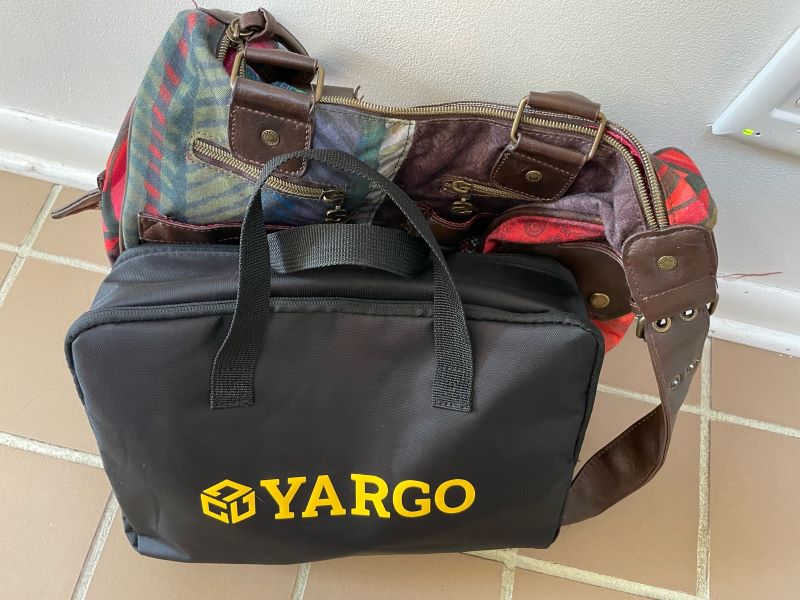
Setup
After getting over the inial shock at the compact size and almost-nothing weight of this, we unfolded it. Sure enough, a full-sized solar panel!
We set about testing it out, connecting it to our favorite power station, the EBL.
A solid green light lets you know it’s getting power.
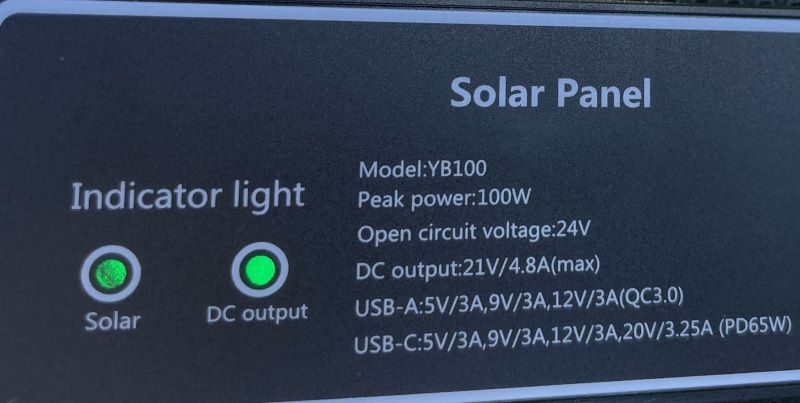
Our previous Yargo solar panel had an attached 4-in-1 connector cable with a zip-pouch attached to the panel. This one comes with a separate cord (but there is a spot in the carry bag for it). This is the exact same cable as the other Yargo panel, with a 5.5*2.1mm connector, MC4 cable, Anderson, and 3mm connector.

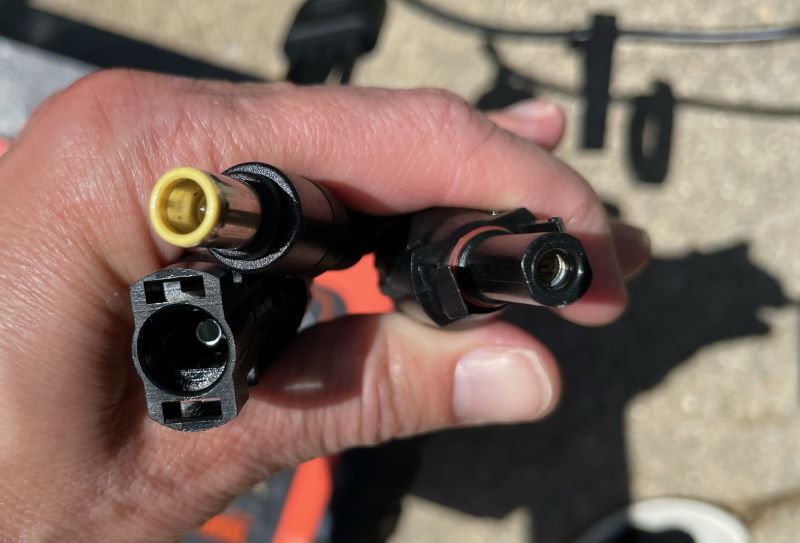
For outputs, it has a DC output of 100W (power stations), a USB-C output of 65 Watts (laptops, tablets), and a USB-A output of 36 Watts (cell phones, power banks). The output panel has a little cover that snaps into place, which is a nice touch.
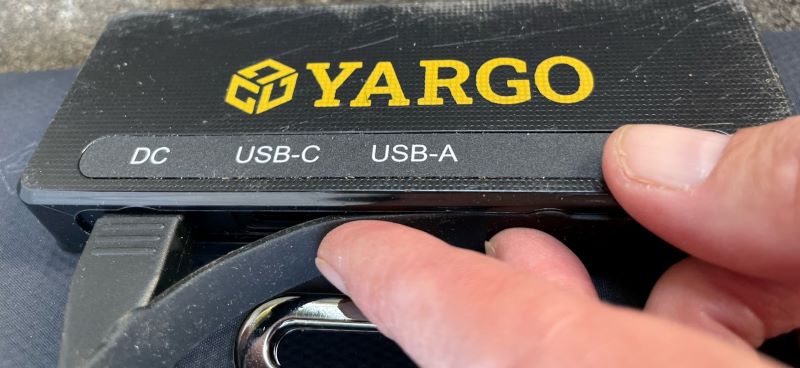
When you’re done, it’s very easy to fold back up. It has an attached strap that you velcro into place to secure it, and then folded up, it’s about the size of a binder. Easy as that.
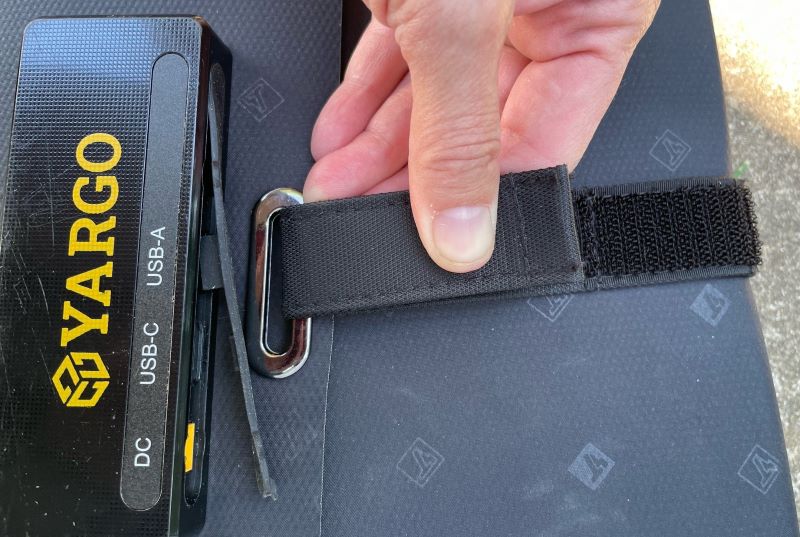
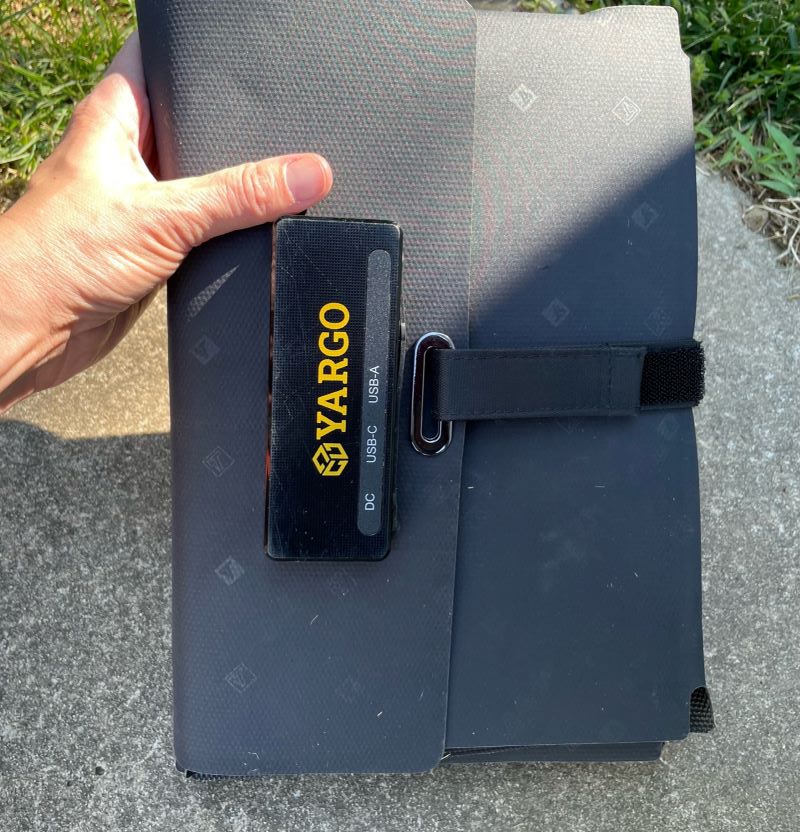
Performance
Unlike its bigger cousin, this portable solar panel does not have built-in legs to stand it up for ideal positioning. Instead, it has holes in each corner that you can use to fasten in place with carabiners (it comes with four).

There’s also a little pouch in the carry bag for these or any other small accessories, cords or chargers you may want to keep handy.
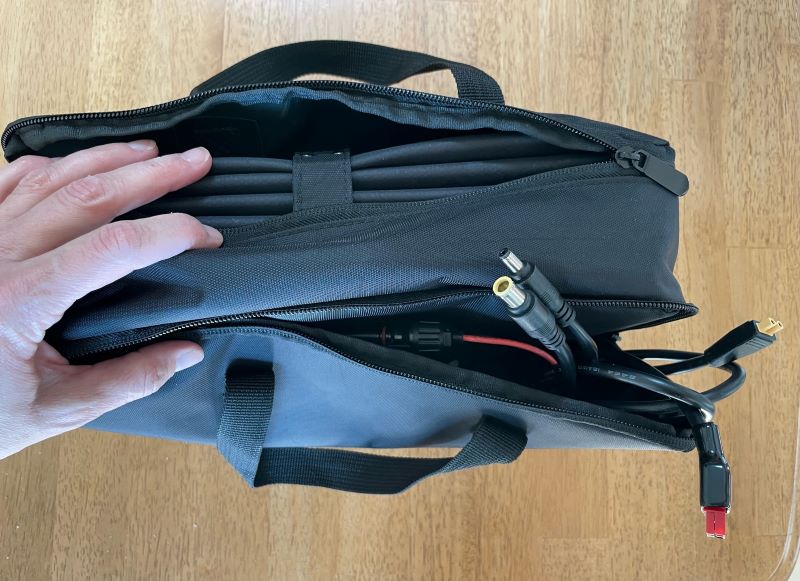
Instead of the carabiners, I just used an existing hook on our back shed to prop it into place.
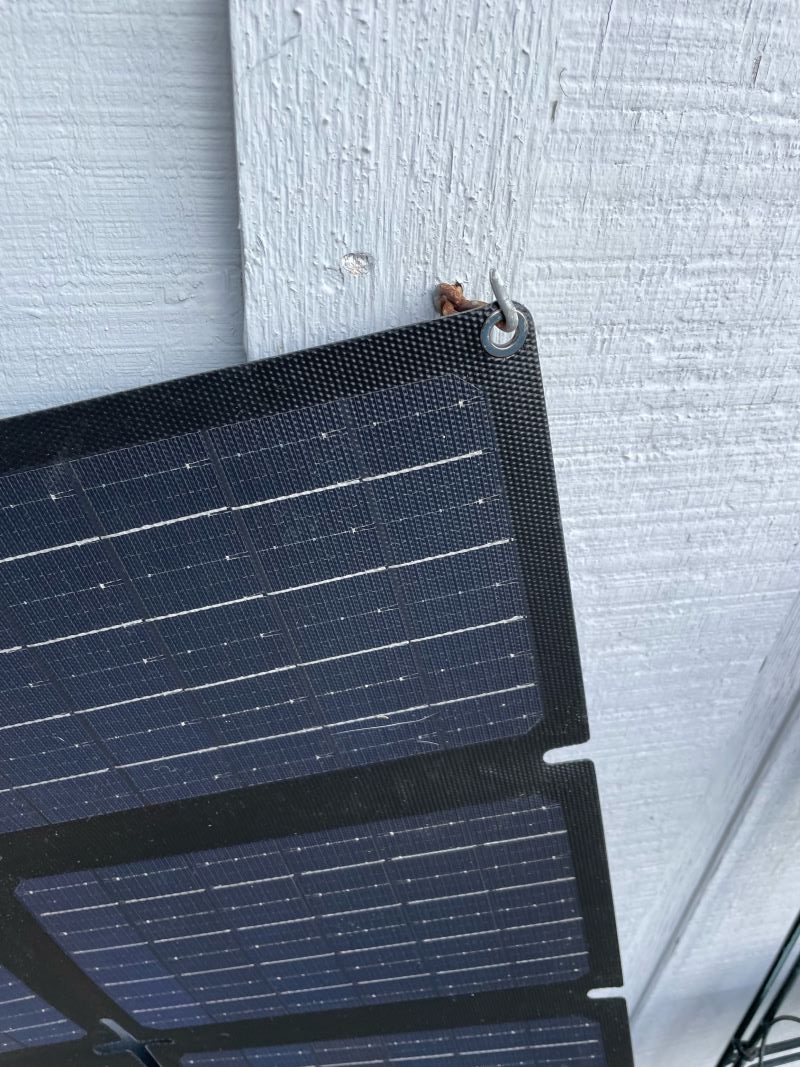
I found that hanging it up made a big difference in improving the charging time, compared to just leaning it up against the power station or spreading it out on the grass like a beach towel.
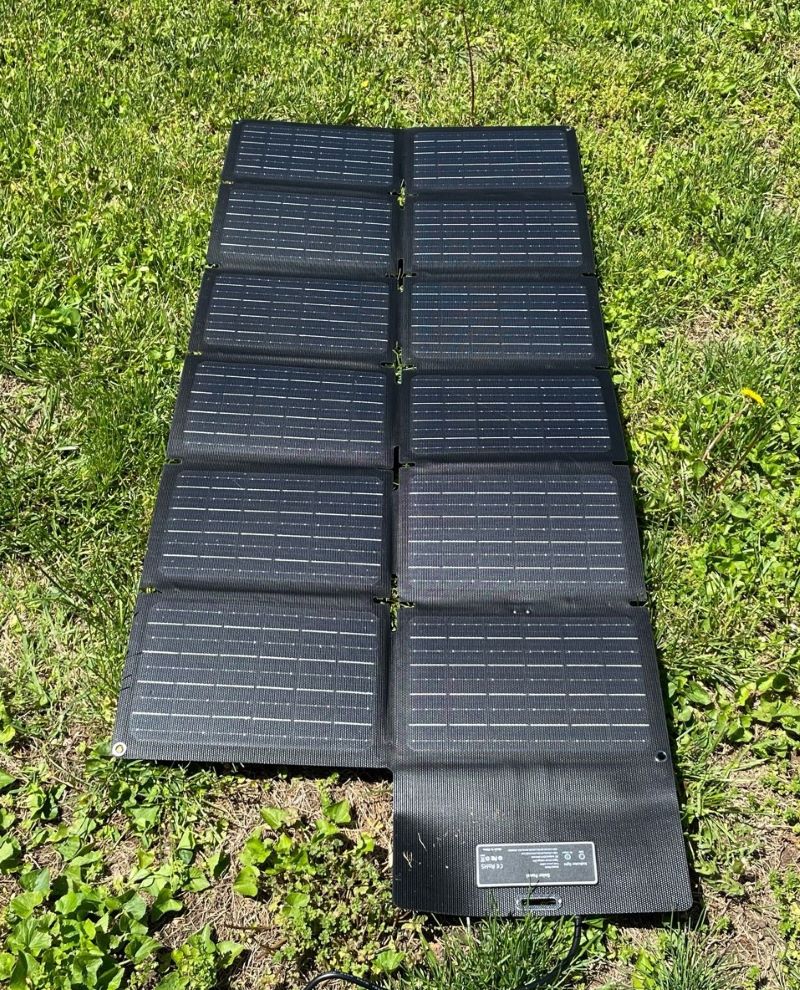
Yargo markets this as ideal for RVS and camper vans, and their website shows photos of this portable panel attached to RV awnings, which makes a lot of sense.
The incorporated legs in the bigger panel add some weight, so the trade-off depends on your setup and how you plan to use it. Another difference between the two is that the version not marked as portable included embedded handles whereas this one doesn’t. The yellow handles on the bigger one made it feel a bit more robust and easier to carry, but this one folds up much smaller; so again, it’s a trade-off depending on your intended usage.
Weather and angle hugely play into how quickly this powers up. Even if it’s partly cloudy, the charging time is dramatically slowed. For example, in two hours on a partly cloudy/partly sunny day, it only powered up our 1000W power station by 8 percent; another day with similar weather yielded about 20 percent over four hours; so 4-5 percent an hour. However, it powered up at nearly twice that rate hanging on the shed on a fully sunny day in constant direct sunlight over two hours.
Yargo gives a side-by-side of the two panels and their charging times, showing they should have the same charging times to get to the same power-station wattage; from 160WH taking 2.3 hours, all the way to 1500WH taking 21.8 hours. It says 14.6 hours for a 1000WH station like ours, which seems accurate, but only if it’s a very sunny day and you’re continuously changing the panel’s angle to face the sun.
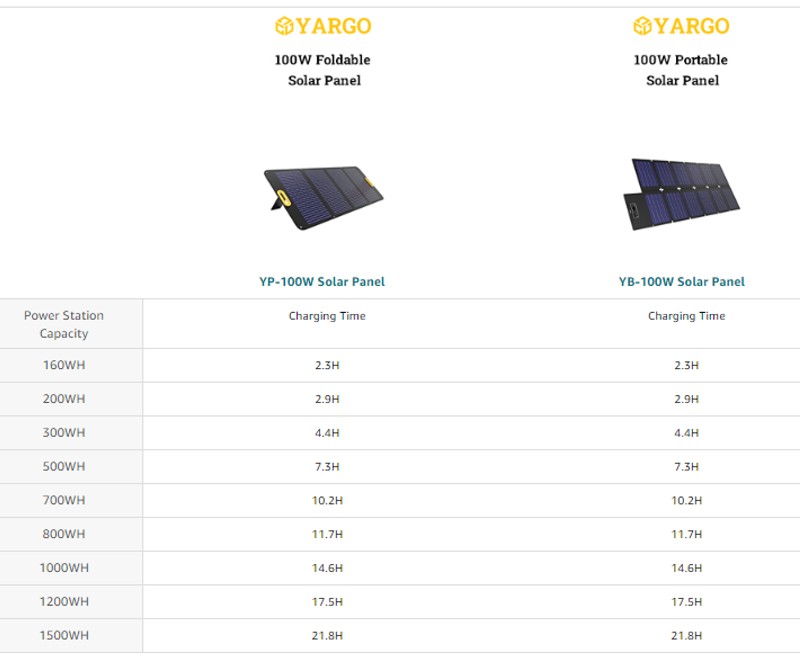
When comparing these two, I have to go back to portability. I remarked on how light our previous solar panel was at just over 8 pounds, but this is even lighter. If I was going back-country backpacking or cross-country biking or something like that where portability was crucial, this would be my solar panel of choice, hands down.
What I like
- Portability
- Easy and intuitive to use
What I’d change
- Adding a kickstand (but since that would increase the weight, I understand why they didn’t)
Final thoughts
Another solid solar panel from Yargo, especially if you’re looking for a portable version.
Price: $229.99
Where to buy: Amazon or Yargo website (save 17% on Yargo’s site with code: gadgeteer no expiration date)
Source: The sample of this product was provided by Yargopower.


